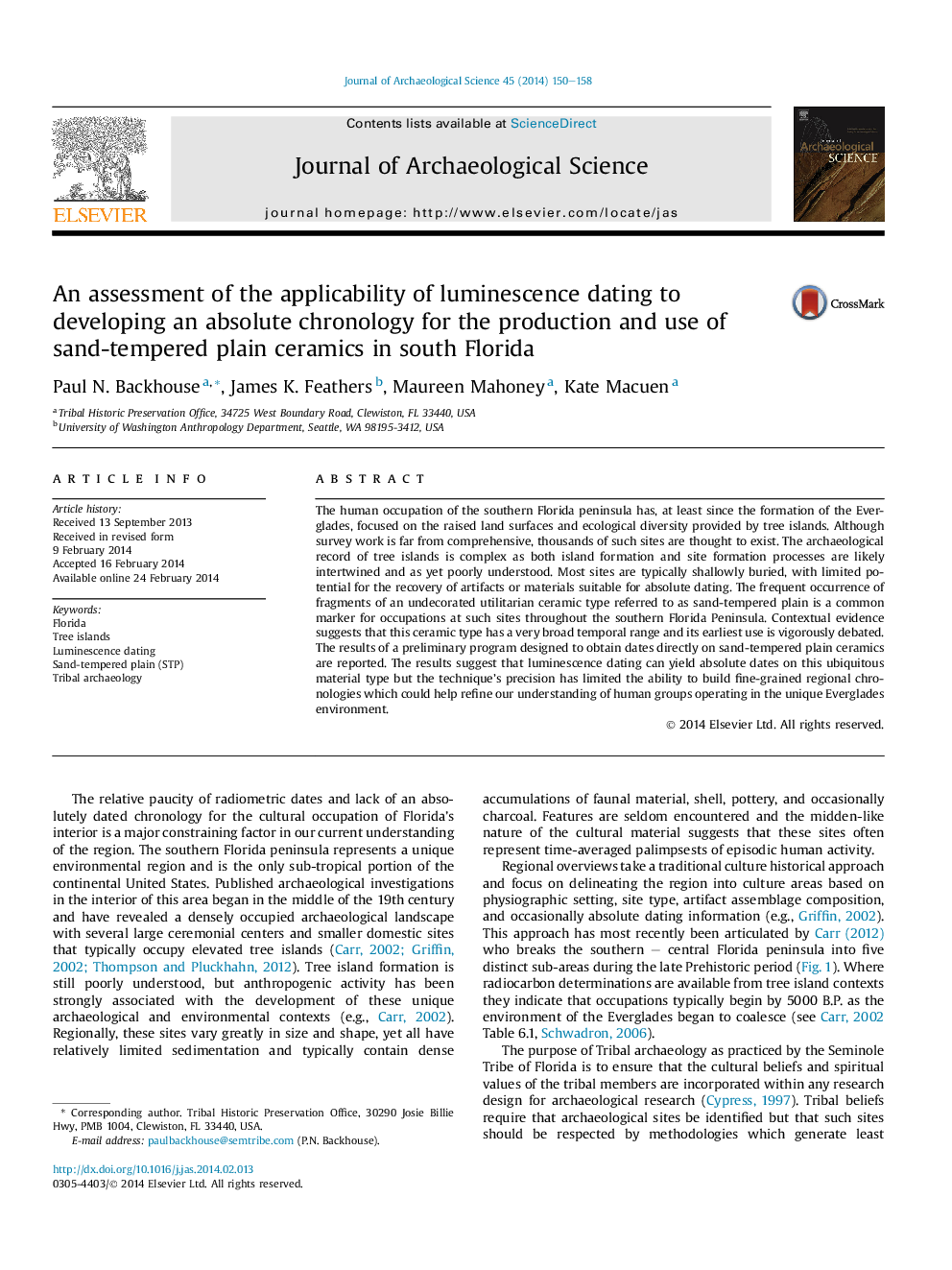| Article ID | Journal | Published Year | Pages | File Type |
|---|---|---|---|---|
| 7443454 | Journal of Archaeological Science | 2014 | 9 Pages |
Abstract
The human occupation of the southern Florida peninsula has, at least since the formation of the Everglades, focused on the raised land surfaces and ecological diversity provided by tree islands. Although survey work is far from comprehensive, thousands of such sites are thought to exist. The archaeological record of tree islands is complex as both island formation and site formation processes are likely intertwined and as yet poorly understood. Most sites are typically shallowly buried, with limited potential for the recovery of artifacts or materials suitable for absolute dating. The frequent occurrence of fragments of an undecorated utilitarian ceramic type referred to as sand-tempered plain is a common marker for occupations at such sites throughout the southern Florida Peninsula. Contextual evidence suggests that this ceramic type has a very broad temporal range and its earliest use is vigorously debated. The results of a preliminary program designed to obtain dates directly on sand-tempered plain ceramics are reported. The results suggest that luminescence dating can yield absolute dates on this ubiquitous material type but the technique's precision has limited the ability to build fine-grained regional chronologies which could help refine our understanding of human groups operating in the unique Everglades environment.
Related Topics
Physical Sciences and Engineering
Materials Science
Materials Science (General)
Authors
Paul N. Backhouse, James K. Feathers, Maureen Mahoney, Kate Macuen,
